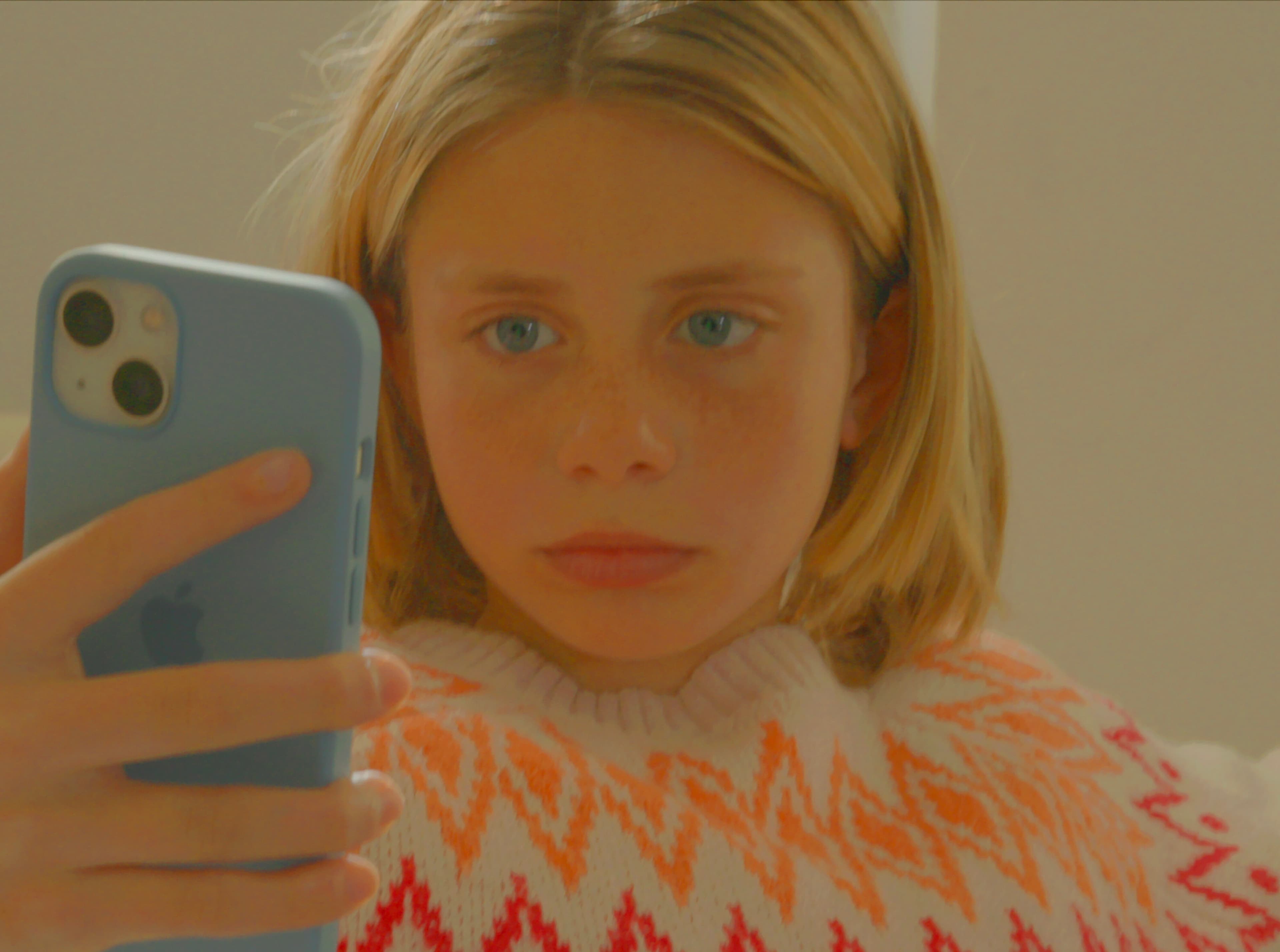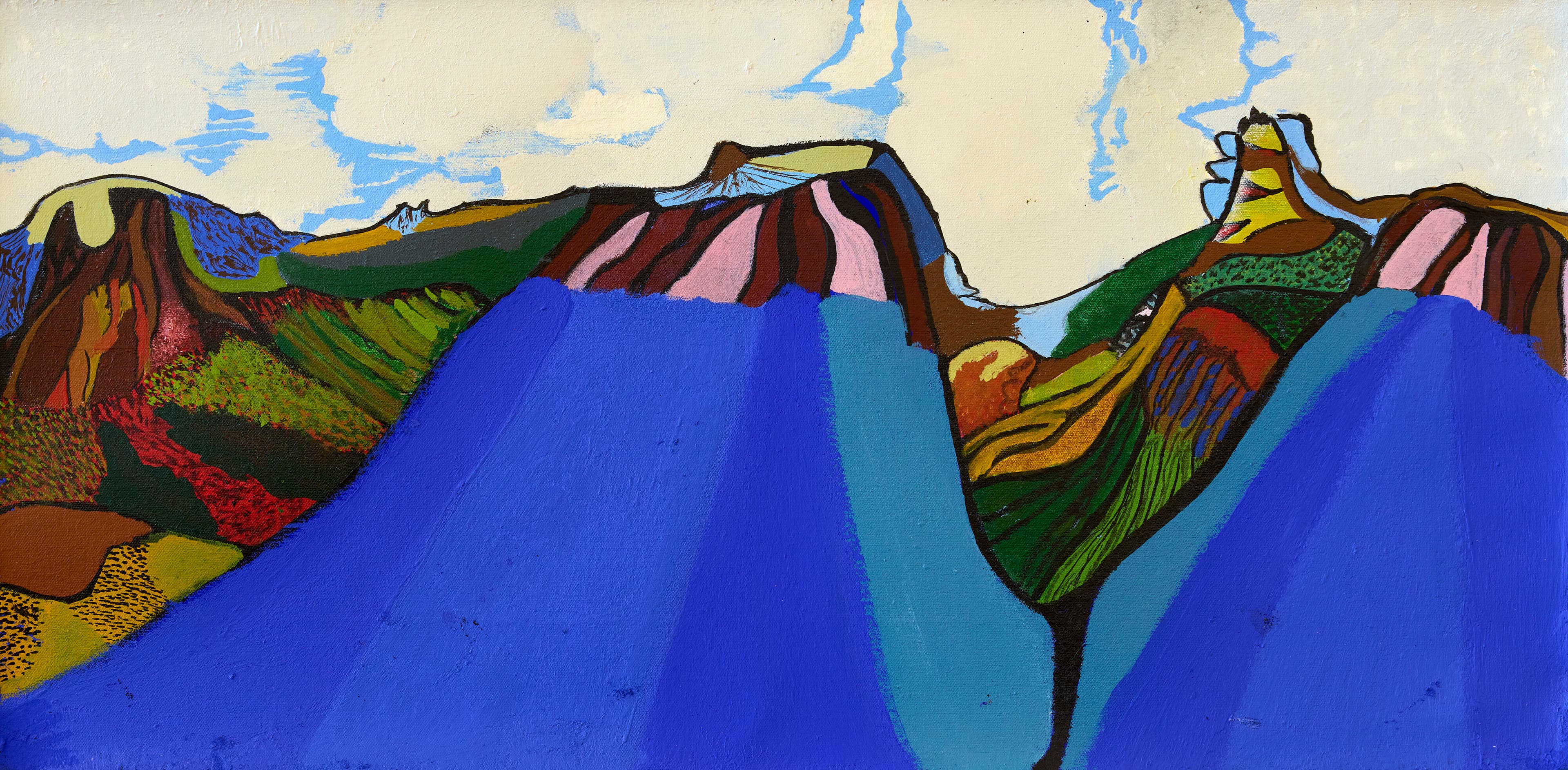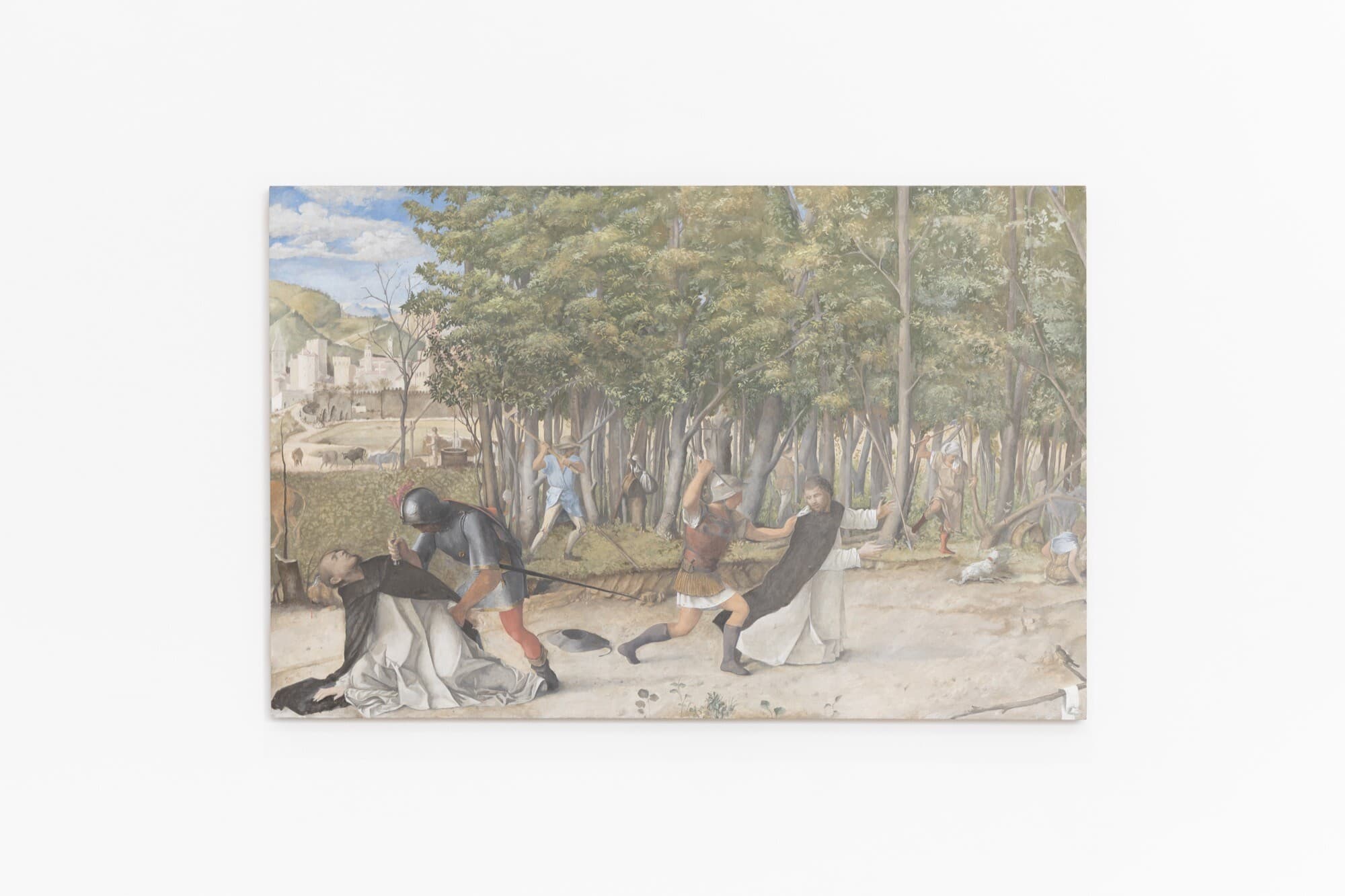Aboriginal/Islanders Dance Theatre in FESTAC ’77, Lagos, Nigeria. Dancers: Lillian Crombie, Michael Leslie, Wayne Nicol, Richard Talonga, Roslyn Watson. Photographer unknown. Courtesty aboriginal artists agency. 24th Biennale of Sydney, Ten Thousand Suns, White Bay Power Station. Photo by Nick Croggon.
The 24th Biennale of Sydney: Ten Thousand Suns
Nick Croggon
Only four years ago, Sydney’s White Bay Power Station seemed destined for destruction. During a visit to the site in November 2020, NSW Transport Minister Andrew Constance noted with distaste that “it’s full of asbestos, it’s a highly contaminated site, it really adds no value.” In question time a few days later, the Treasurer Dominic Perrottet described the Station as a “shocking building” that should be torn down. In an opinion piece published in the Sydney Morning Herald not long after, Perrottet walked back his demand, instead listing ten other sites from Sydney’s industrial past that he would like to see bulldozed.
Perrottet’s polemic was, as he noted, tongue in cheek—a lazy attempt to spark a new culture war using architectural heritage as the fuel. Yet his words also betrayed what was really at stake. Perrottet’s problem with Sydney’s industrial and brutalist architecture was not simply its lack of beauty (which, after all, characterises most new corporate buildings in Sydney’s CBD), but rather that its aesthetics were out of synch with Sydney’s current stage of capitalist development. The Power Station stood as an ugly reminder of the now defunct industrialism on which the city’s affluence was based. No longer an active producer of economic “value” (as Constance noted), the site had become merely architecture.
By 2020, however (as Perrottet was surely aware), plans to reinsert the Power Station into a new value economy were already well underway. The Power Station site was at the heart of two major infrastructure projects: the Metro West (a twenty-seven billion dollar rail project joining Parramatta to the city) and the Bays West urban renewal project. As part of these projects, the unproductive architecture of the Station would be given new life as a cultural and community precinct.

Artist’s impression of Bays West stage 1, showing White Bay Power Station.
In March 2024, after more than one-hundred million-dollars worth of restoration work, the Power Station opened to the public as the central venue for the 24th Biennale of Sydney. The use of an ex-industrial site as an exhibition space is, of course, nothing new—Sydney already has two ex-power stations turned galleries (the Powerhouse Museum and the Casula Powerhouse), and the Biennale itself has long made use of the old shipbuilding complex on Cockatoo Island. Indeed, using such sites to accommodate the increasingly large scale of contemporary art has been a global phenomenon since at least the 1990s, most famously in the vast, empty expanse of Tate Modern’s giant Turbine Hall. What sets the Power Station apart, however, is that it is not empty—its own Turbine Hall is still half full of hulking machines, pipes and chains, rendering its industrial past remains eerily present.
The confrontation between past and present is also at the heart of this year’s Biennale. The idea of “Ten Thousand Suns”, as formulated by curators Inti Guerrero and Cosmin Costinas and elaborated by curatorial collaborators Tony Albert and Vivian Ziherl, denotes not so much a theme as what Walter Benjamin would call a “dialectical image”: a collapsing together of two distinct historical trajectories in the bright flash of the present. On the one hand, the image evokes the overwhelming power of Western (and especially Australian) colonial capitalism, its deployment of carbon and atomic means of production, and their culmination in our contemporary climate crisis. On the other hand, the image evokes the multiplicity of cultural viewpoints that have survived and resisted this “apocalyptic normal”, especially through practices of joyful celebration.
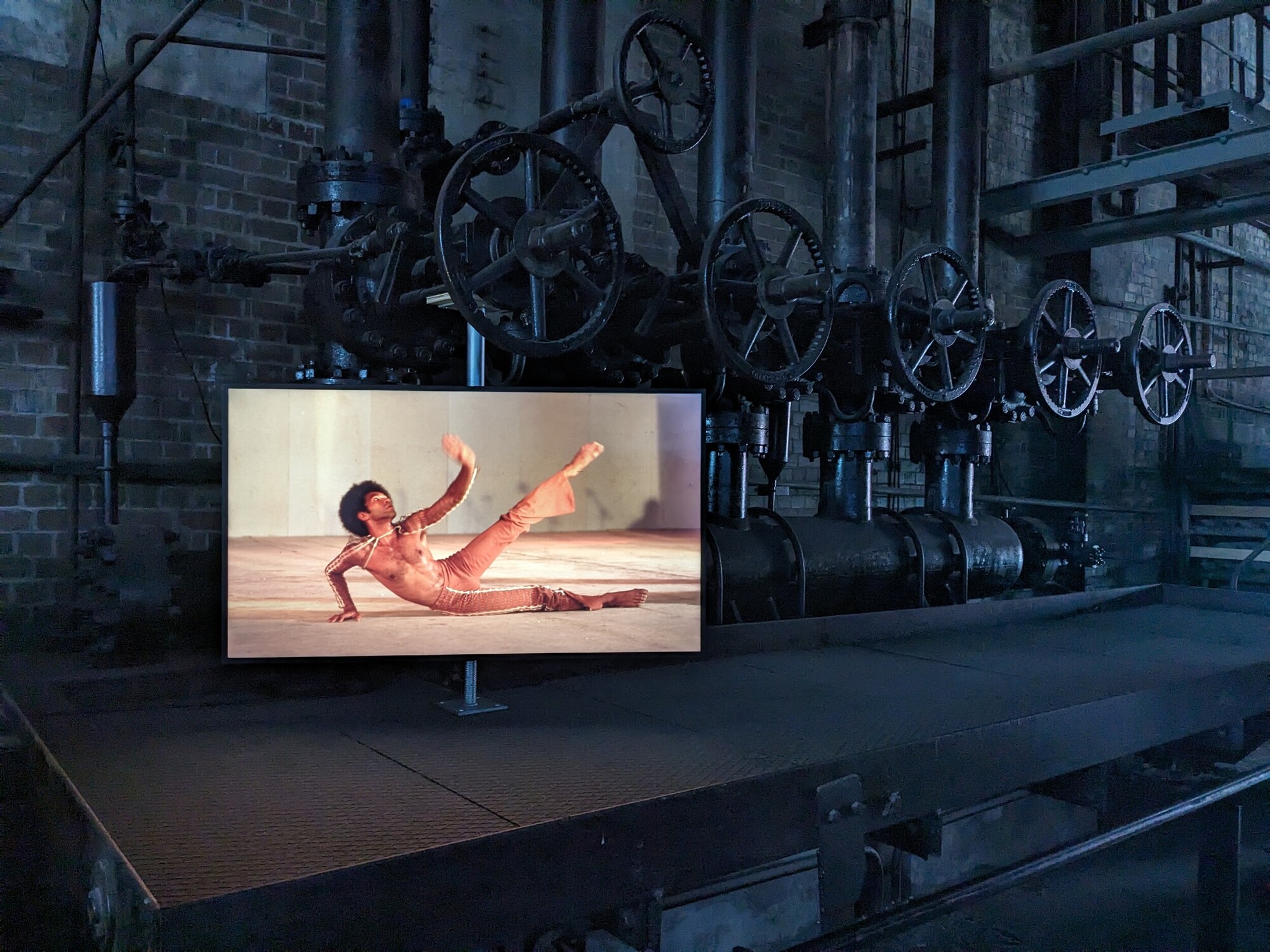
Aboriginal/Islanders Dance Theatre in FESTAC ’77, Lagos, Nigeria. Dancers: Lillian Crombie, Michael Leslie, Wayne Nicol, Richard Talonga, Roslyn Watson. Photographer unknown. Courtesty aboriginal artists agency. 24th Biennale of Sydney, Ten Thousand Suns, White Bay Power Station. Photo by Nick Croggon.
While the dialectics of apocalypse and joy are explored in myriad ways across the Biennale’s five venues, it is at the Power Station that it appears in its most starkly oppositional terms, as the confrontation between art and architecture. This is made clear in the venue’s opening gambit. Here, emerging out of a dark tangle of oily pipes and scaffolding, a suite of luminous digitised images pay tribute to the Aboriginal/Islander Dance Theatre (AIDT) and their 1977 participation in FESTAC, a Black and African arts festival held in Nigeria. This history of Black solidarity is made present by two sets of photographs: a suite of soft black and white images of the AIDT’s preparations for the festival by Chinese-Australian photographer William Yang and a warm colour set by an unknown photographer of one of their performances. These images—and their illuminated digital presentation—both transcend and transform the dark space of their display, the dancers’ studied poses imbuing the metal pipes and gears with a kind of formal grace.
Elsewhere in the exhibition, the struggle between contemporary artwork and industrial architecture appears more precarious. In works by Christina Flores Pescorán and the Aumoana group, the venue’s homogenising aesthetics of industrial mass-production meets the handmade—gorgeous structures of cotton, ink and barkcloth that speak of highly complex and local techniques of Indigenous making and knowing. The aesthetics of the handmade is differently deployed in the video projections of Monira Al Qadiri and Josh Kline, who eschew digitally generated images for model constructions of an oil refinery (Qadiri) and a flooded New York (Kline). A display of cyber-feminist collective VNS Matrix’s 1990s’ critique of “Big Daddy Mainframe” (their term for the hegemony of post-WW2 information technology) offers the link between the industrial past and the digital present.
Strolling around the Power Station, however, it is hard not to feel as though the architecture is ultimately winning the battle against art. The sheer scale of the space and its equipment, and their evocation of the industrial operations carried out there, generate an overwhelming affect of the industrial sublime that presses in on the viewer and pushes out individual works’ details and histories. In the vast expanse of the Turbine Hall, for example, the subtle complexity of Aumoana’s bark-cloth kites seems almost to disappear. VNS Matrix’s “A Cyberfeminist Manifesto for the 21st Century” banner, which loomed so large on the exterior walls of Sydney’s Tin Sheds gallery in the early 1990s, pales next to the hulking mass of a turbine generator.
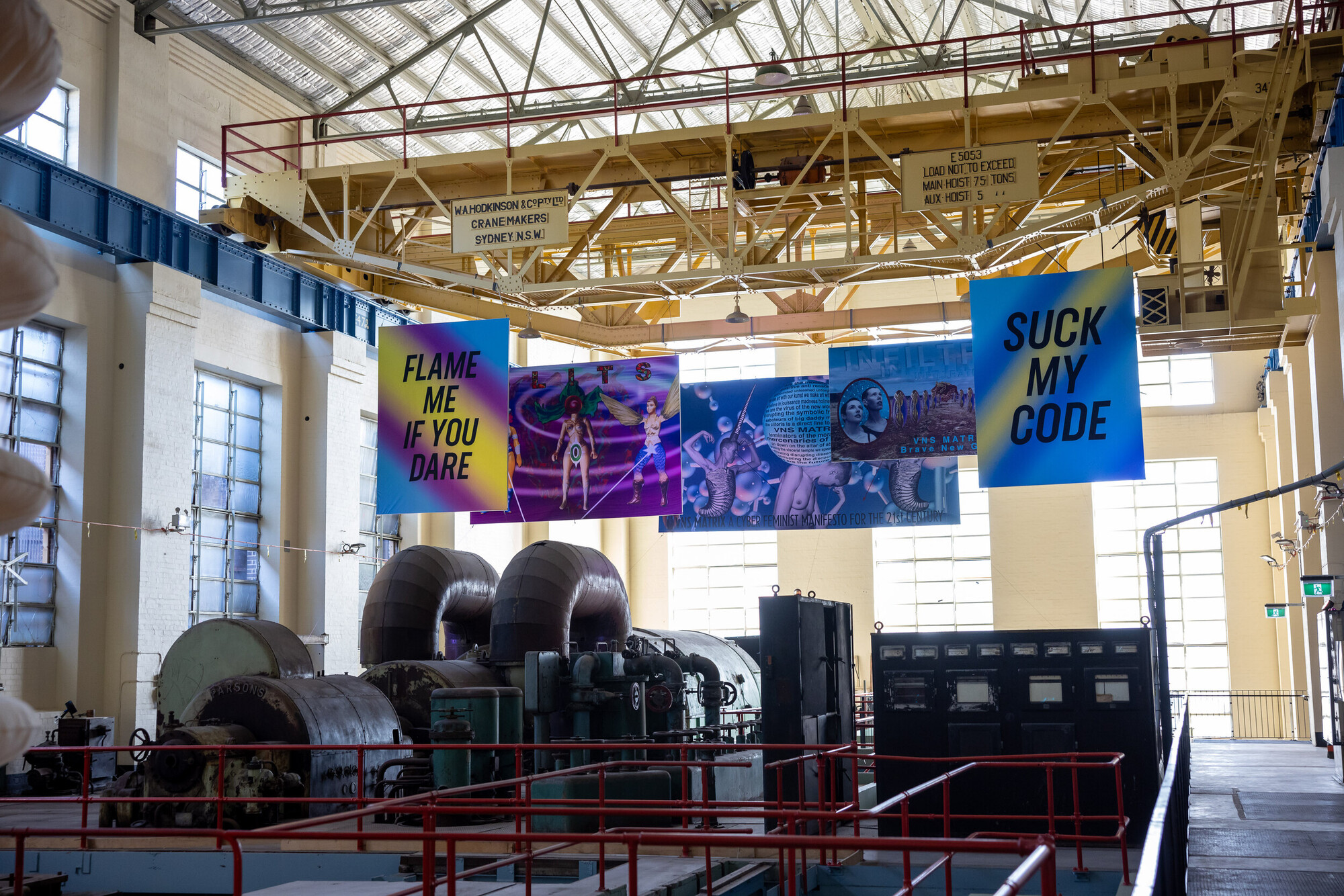
VNS Matrix, FLAME ME IF YOU DARE, 1993 (renamed and reprinted for exhibition 2024), DNA Slits, 1993 (renamed and reprinted for exhibition 2024), A Cyberfeminist Manifesto for the 21st Century, 1991 (reprinted for exhibition 2024), Infiltrate, 1994 (reprinted for exhibition 2024), SUCK MY CODE, 1996 (reprinted for exhibition 2024), 24th Biennale of Sydney, Ten Thousand Suns, White Bay Power Station. Photo by Daniel Boud.
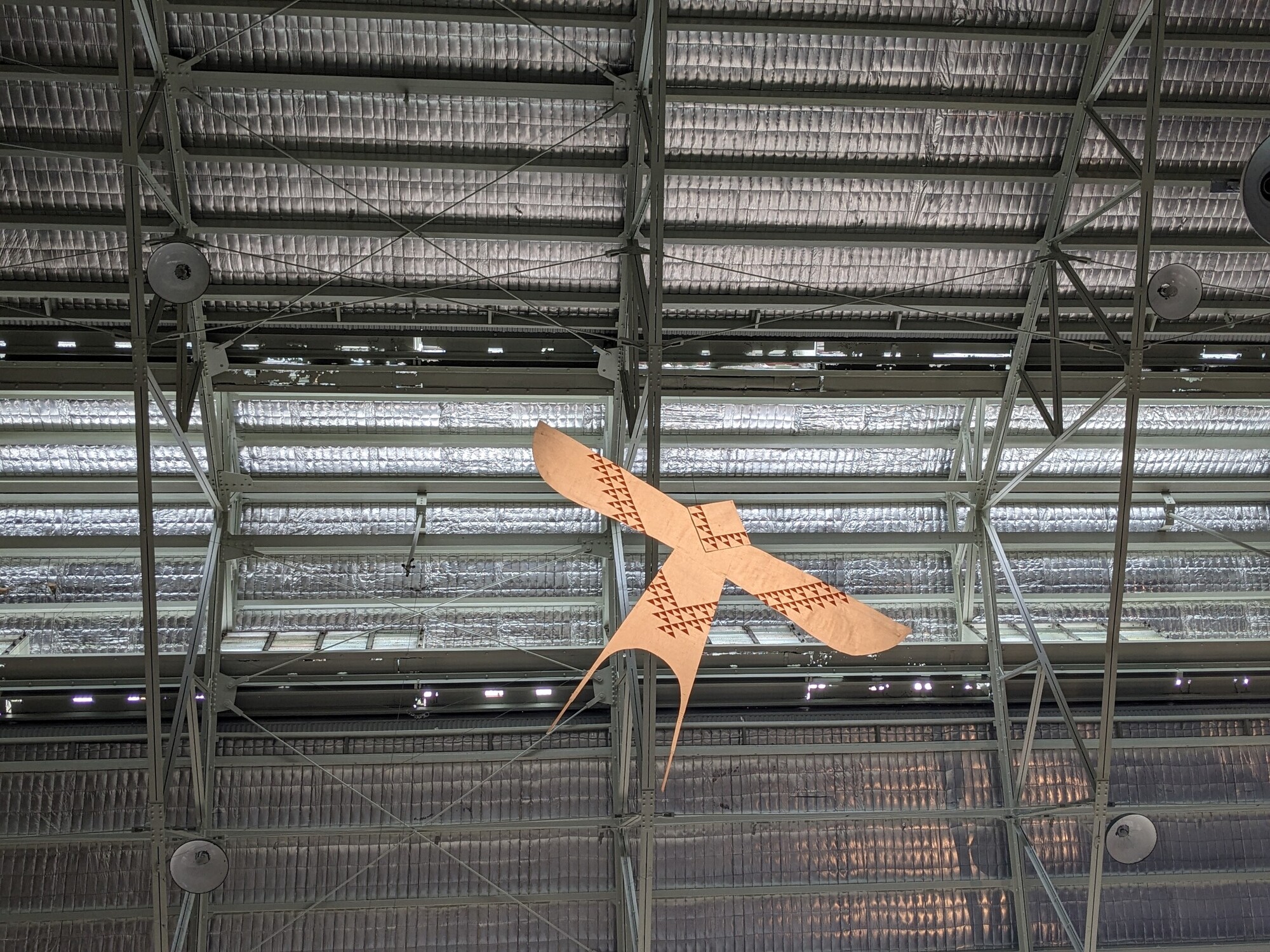
HInatea Colombani, Moeder and Nikau Hindin, Aute (1), 2023. 24th Biennale of Sydney, Ten Thousand Suns, White Bay Power Station. Photo by Nick Croggon.
The Power Station is thus far from the passive, unproductive space Constance and Perrottet accused it of being. As part of the exhibition, visitors can join a behind-the-scenes tour of the venue, which explains the Station’s past operations and takes visitors to areas not otherwise accessible. This tour elucidates how the Station’s architectural compartmentalisation organised multiple processes, people and movements into a unified, efficient unit for the transformation of coal into electricity. The whole building can be understood, as my guide Lev Dilsiz noted, as a single “machine.”
This history can (or should) make a viewer reflexively aware of how the Power Station is still at work, part of a new infrastructure of urban growth, such as the Metro West project unfolding unseen beneath the Station’s very floors. The venue’s restored spaces and walkways organise spectators and artworks into a smooth circuit of distracted observation, one that at all moments threatens to neutralise the power and complexity of individual works in a generalised experience of “culture.”
The Biennale’s strongest bulwark against this risk is, ultimately, not the works themselves, but rather the deep research and knowledge that underpins them and the exhibition itself, as outlined in the indispensable exhibition catalogue. In contrast to the Power Station’s architecture of distraction, the catalogue elicits an experience of immersion, with its essays, stories, conversations, and manifestos in this book opening up the complexity of the artworks’ joyful affirmations, and the historical threads of the apocalyptic normal against which they are posed. It is here that the exhibition truly comes alive.
Nick Croggon is an art historian, writer and editor based on Gadigal and Wangal land.
